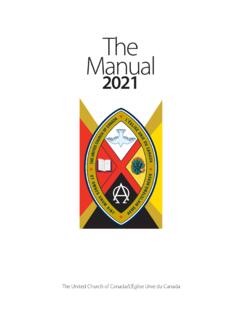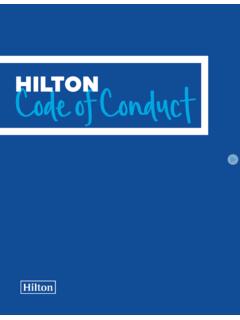Transcription of Designing a Character: A Drama Unit for Drama 20
1 Designing a character : A Drama unit for Drama 20 By Susan Pattison 2005 Teaching Materials from the Stewart Resources Centre 2 Table of Contents Introduction p. 1 Key to CELS p. 1 Foundational Objectives p. 1 Concept Map p. 3 Activities One: Imagining character p. 4 Two: character Collage p. 6 Three: Developing Back Story p.
2 7 Four: character History p. 9 Five : Relationships p. 12 Six: Objectives p. 14 Seven: Characters in Conflict p. 16 Eight: Bringing in the character s Past p. 19 Nine : Displaying the character p. 21 Ten: Writing and Presenting a character Monologue p. 23 Monologue Rubric p. 25 Final Assessment Tally p.
3 26 Annotated Website Bibliography p. 27 Bibliography of Print Sources p. 28 Appendix A: Notes on Using Monologues in Collective Creation p. 29 1 Introduction Developing and Presenting a character The focus of this unit will be on character development, either in context of a collective creation, or as a discrete section in a Drama course. Although the Foundational Objectives for Drama 20 are used as the guidelines for this unit , this unit could also be adapted for use in Grade 9 or in Drama 10 or 30. Key to CELS COM communication PSVS personal and social values and skills CCT creative and critical thinking IL independent learning TL technological literacy NUM numeracy Foundational Objectives: page numbers refer to Saskatchewan Education (1993).
4 Drama 10, 20, 30: Curriculum Requirements. 1. Develop self-confidence, self-discipline and self-motivation. (COM) (p. 29) Concentrate during Drama experiences. (CCT, COM) Develop a sense of responsibility to other members of the class. (PSVS) Cooperate with others. (PSVS) 2. Develop an understanding of the processes and elements involved in creating works of dramatic art. (IL, COM) (p. 31) Understand how improvisations can be used to explore characters. (CCT) Create characters from various stimuli (CCT) Understand what motivates the characters they portray. (PSVS) Maintain focus in improvisations. (CCT) Introduce tension to improvisations (CCT) Use contrast in improvisations (CCT) 2 Inject the use of symbol into improvisations (CCT, PSVS) 3. Develop acting skills. (CCT, COM) (p.)
5 32) Portray characters in monologues, improvisations and scripted scenes. (CCT, COM) Express themselves confidently through movement and gesture (COM) Communicate character through movement and gesture. (COM) Participate in blocking (adding movement ) to improvised or scripted scenes (CCT, IL) Understand and execute stage movement effectively (CCT, IL) Understand and execute stage business effectively (CCT, IL) Develop a poised, controlled posture. (COM) 3 character VISUAL STIMULI MONOLOGUE FUTURE HISTORY PAST MEMORABILIA COSTUMES PROPS PHOTOS COLLAGES REACTIONSSUCCESSES GOALS MOTIVATION OBJECTIVES LIMITS SENSE OF PLACE ACCENT FAILURES FEARS RELATIONSHIPS EXTERNAL FRIENDS ENEMIES PHYSICAL ENVIRONMENT CONFLICT CONCEPT MAP 4 Beginnings: Please consult page 26 in the Drama 10, 20, 30 document from Saskatchewan Learning for guidelines in setting up your classroom.
6 Activity One: Imagining character In advance of the class, go through magazines and choose interesting faces of people. You can also use the Art Image kits (especially the one on portraiture) to find some images of people. Mount the photos you have found on construction paper and place them on the walls all over the classroom. When the students arrive for class, have them sit comfortably and brainstorm some characteristics of characters. Using a cartoon character such as Homer Simpson can sometimes help the students focus on the characteristics of a character . Generate a list which contains such words as: gestures, characteristic phrases and tone of voice; movement. The students may generate other terms which can be grouped into these general categories. Have the students volunteer to imitate characters that they know from the media.
7 Have the rest of the students guess the character and help the performing student improve on their depiction of the character . Draw the students' attention to the photographs on the walls of the classroom. Emphasize that without telling anyone which image they have chosen they will improvise one of the characters using the generated list of terms. Emphasize that they will need to develop characteristics from the list. After about five minutes (or so) have the students return to the circle. Ask for volunteers for performance and then have the other students guess which person the student is representing. You or the students may question the choices that the students have made in representing their characters. Emphasize that any suggestions must be made in a positive way. In their Drama journals, have the students write down the generated list of words and comment on the success/failure of the activity.
8 Have them comment on the challenges they had when trying to assume an unknown role based on a photograph. ASSESSMENT In your teacher notes, record which students were successful in completing the exercise and which found it challenging. You could also note which of the photographs were the most useful to use in another year. 5 Checklist for Imagining character : Student Name: Foundational Objective: Develop an understanding of the processes and elements involved in creating works of dramatic art. Learning Objectives: characters from various stimuli. 1 2 3 4 5 how improvisation can be used to explore characters. 1 2 3 4 5 Foundational Objective: Develop self-confidence, self-discipline and self-motivation. Learning Objectives: classroom routines and procedures.
9 1 2 3 4 5 during Drama experiences. 1 2 3 4 5 to start or join activities. 1 2 3 4 5 6 Activity Two: character collage Materials: Newspapers, magazines, construction paper, scissors, glue Procedure: Recap what was accomplished last day. Review the list of character words. Ask the students how they perceived the exercise. Explain to the students that today they will be looking through magazines to find their own character . On the chalkboard, write the following list of instructions: o Your character cannot be an imitation of a movie star, television character or other famous person. o The photograph you choose doesn't have to look like you. o The photograph you choose should give you some idea of the type of person who may be represented. o You will use the construction paper to mount the photograph of the person along with photos of some of the person's favourite things, expressions, places, etc.
10 Make sure you have given yourself a name. o At the end of the class, you will speak as your character and explain why the symbols, THINGS you have chosen are important to you. o You will be working with this character for more than one class, so plan carefully! Give the students about 20 minutes to find the information that they need. After the collages are completed, have the students form a circle and present the information about their character . Encourage the observing students to ask questions of the character . ASSESSMENT In their Drama journals, have the students comment on their character . They could make a brief character sketch similar to those done in English class. Check for the completeness of each character collage. Comment anecdotally on the quality of the work, the willingness to sustain character , and the commitment of the student to the exercise.







